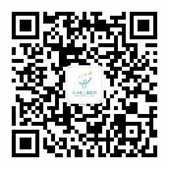Colds or Allergies? In Babies and Toddlers

A baby's first sniffles can be scary and confusing, especially when everyone from the nurse at your pediatrician's office to your mother-in-law spouts conflicting opinions. Most of the time symptoms like runny nose, rash, upset stomach, or crankiness – especially if they're short-lived – are the result of a cold or another passing ailment.
However, in some cases the cause is allergies.
婴儿第一次抽鼻涕总是会让妈妈感到害怕和困惑,而且从亲朋好友、热心妈妈、到婆婆,每个人都在滔滔不绝地发表完全不同的意见。
请不要慌张,因为实际上,在大多数情况下,流鼻涕、皮疹、胃不舒服或脾气暴躁等——尤其是短期的症状——都是因为感冒或其他疾病。
但有时候,却是因为过敏而造成的。

When baby has an allergic reaction, it's the result of an inappropriate response by his immune system. The immune system is programmed to fight off illness, but sometimes it reacts to a harmless substance, like pollen, as if it were an invading parasite, virus, or bacteria. To fight back, the immune system overproduces protective proteins called antibodies. This overproduction causes swelling and inflammation of tissues – the nasal passages, for example. Your baby's allergic reaction can recur whenever he's exposed to whatever triggered it.
The tendency to get allergies is hereditary, but specific allergies are not. For example, if you're allergic to penicillin, your child may develop allergies although he might not be allergic to penicillin.
婴儿产生过敏反应,是宝宝的免疫系统进行了不适当的应激反应。通常来说,免疫系统是用来抵御疾病的,但有时它会对无害的物质,如花粉,把它们当成是入侵的寄生虫、病毒或细菌一样进行反击。因此,免疫系统就会过度生产一种保护性蛋白质——抗体。这种过度生产会导致人体组织,如鼻腔,发生肿胀和炎性反应。当宝宝一旦接触到过敏原,过敏反应就会出现。
过敏体质是有遗传性的,但并不一定表现为对同种物质的过敏。例如,如果您对青霉素过敏,您的孩子可能是过敏体质,但TA可能对青霉素并不过敏,而对其他物质过敏。
Colds
vs.
Baby Allergies
Can you tell the difference between a cold and an allergy? It's not easy, because the symptoms are similar on the surface. These symptoms will help you distinguish a cold from an allergy:

Upper Respiratory Tract
A runny nose with cloudy nasal discharge and fever is probably a cold. The symptoms should go away in a week or so. But persistent, thin, watery nasal discharge may indicate allergies.
A rare and severe allergic reaction called anaphylaxis results in rapid swelling of baby's airways. This prevents baby from breathing or swallowing. If you think this is happening to your child, go to nearby hospital immediately, or call 120 for ambulance in China.
流脓鼻涕和发烧,多数情况下是感冒。这些症状一般会在7-10天左右消失。但若有持续、稀薄、水样的鼻涕,则可能表明过敏。
过敏性休克,发生率低但却十分严重,会导致婴儿呼吸道迅速肿胀,阻碍婴儿呼吸或吞咽。如果您孩子发生这样的情况,立即去附近的医院,或者拨打120叫救护车。
Lower Respiratory Tract
Coughing and wheezing (noisy breathing in which your baby makes a whistling sound) are common in infants and toddlers. Babies have small, sensitive airways in their lungs. When the airways swell up as a result of a respiratory virus, babies tend to cough or wheeze. Sometimes coughing and wheezing are the result of asthma, a lower respiratory disease that affects about 15% of children in the United States.
Allergic babies are prone to respiratory viruses and have trouble getting rid of coughs or colds. In response to allergens and viruses, the muscles of baby's airways haves spasms and swell, leading to a dry, hacking cough. This can progress to wheezing.
咳嗽和喘息(哮鸣音)在婴幼儿中很常见。婴儿肺部的呼吸道细小而敏感。当呼吸道因呼吸道病毒而肿胀时,婴儿往往会咳嗽或喘息。有时咳嗽和喘息会导致哮喘,在美国大约有15%的儿童患有这种疾病。
过敏的婴儿容易感染呼吸道病毒,(因为鼻腔慢性炎症,导致难以有效阻碍病毒入侵),因此他们往往很难摆脱咳嗽或感冒。为了应对过敏原和病毒,婴儿呼吸道的肌肉会痉挛和肿胀,导致干咳,进而发展成喘息。

Wheezing can be dangerous in a small child because it's an indication that the child is having trouble breathing. If you think your child may be wheezing, observe whether his breathing is noisier when he breathes out or in, whether he's sucking in his chest or stomach or flaring his nostrils to breathe, and whether he seems uncomfortable. If you think your child is showing any of these symptoms, please go to see a pediatrician.
喘息对婴儿来说是很危险的,因为这表明孩子呼吸困难。如果你认为你的孩子可能在喘息,请密切观察TA呼吸时声音是否更为嘈杂,他是否看起来不舒服。如果你认为你的孩子出现了这些症状,请马上预约就医。
You can make an appointment by wechat/call:
177-8637-1112
(English &Japanese)
Eyes

Conjunctivitis, or pinkeye, is a condition caused by both allergies and viruses. Its symptoms are a red eye and discharge that causes the eye to be crusted shut in the morning. Allergic conjunctivitis doesn't look very different from pinkeye that's caused by a virus, so your child's pediatrician will need to make the diagnosis.
There are, however, some things you may notice that are more specific to allergy-induced pinkeye. Babies with allergies may rub their eyes frequently (allergic eyes tend to be itchy), tear excessively, have dark circles under the eyes, and be irritable.
结膜炎,俗称红眼病,是由过敏和病毒引起的一种疾病。它的症状是眼睛发红,且有分泌物,早上醒来有较多眼屎。过敏性结膜炎与病毒引起的红眼病没有太大区别,所以当儿科医生无法给出有效诊断时候,请咨询儿童眼科医生。
然而,你可能会注意到一些红眼以外的其他症状。过敏的婴儿可能会经常揉眼睛(过敏的眼睛容易发痒),流泪过多,眼周有黑眼圈,容易激动。
Skin

Newborns are prone to rashes, but most rashes (including infant acne) vanish by 2 or 3 months of age. This is the time allergic rashes tend to appear.
The most common allergic rash is atopic dermatitis, or eczema, and for many babies it's the first warning sign of allergic tendencies. Eczema is a red, scaly, and sometimes oozing rash on baby's cheeks, torso, arms, and legs. In toddlers and older children, it appears as persistent dry, itchy patches of skin, usually on the neck, wrists, and ankles, and in the creases of the elbows and knees.
Contact dermatitis is an allergic rash caused by a reaction to soap, detergent, wool clothing, poison ivy, or another irritant that has touched baby's body.
The classic allergic rash – the itchy, welt-like hive – is relatively rare in infants, and when it does occur tends to be smaller than in older children and adults (usually less than an inch long).
新生儿容易出现皮疹,但大多数皮疹(包括婴儿痤疮)在两三个月大时就会消失。这就是过敏性皮疹容易出现的时候。
最常见的过敏性皮疹是特应性皮炎(湿疹),对许多婴儿来说,这是过敏的第一个警告信号。湿疹是一种红色的鳞状皮疹,有时会在婴儿的脸颊、躯干、手臂和腿上渗出。在幼儿和年纪大一点的孩子身上,它表现为持续干燥、发痒的皮肤斑点,通常出现在脖子、手腕和脚踝,以及肘部和膝盖的皱褶处。
接触性皮炎是一种过敏性皮疹,可能因为接触了肥皂、清洁剂、羊毛衣物、有毒的常春藤或其他刺激物而引起过敏反应。
典型的过敏性皮疹——发痒、条状的荨麻疹——在婴儿中相对罕见,当它出现时,往往比年长的儿童和成人小(通常不到一英寸长)。
Stomach

Viruses can cause vomiting, diarrhea, upset stomach, and gassiness. But these symptoms can also result from allergies – and not just to food. Children with environmental allergies may have stomach ailments as a result of swallowed phlegm, which can irritate the stomach.
病毒会导致呕吐、腹泻、胃部不适和胀气。但是这些症状也可能是过敏引起的——不仅仅是食物过敏。对环境某些物质过敏的儿童可能会因吞咽痰而罹患胃病,因为痰会刺激胃。
Behavior

Problems with eating, sleeping, or irritability can result from allergies. Your allergic baby will be fussy and uncomfortable. That's usually due to his chronic congestion, abdominal pain, or itchy skin, eyes, or nose.
Another clue to look for is when symptoms occur. Colds are more common in the winter, but indoor allergies (such as a dust mite allergy) may be present all year. A food allergy can manifest itself anytime from a few minutes to a few hours after the offending food is eaten. Seasonal hay fever is most common in the spring or fall, but it usually doesn't affect babies.
过敏会导致饮食、睡眠或情绪等问题。您过敏的宝宝会感到烦躁不适。这通常是因为慢性充血、腹痛或皮肤、眼睛、鼻子发痒。
碰到以上类似症状,家长需要观察:症状何时出现。感冒在冬天更常见,但对室内环境过敏(如尘螨过敏)可能全年都会发生。食物过敏可能会在食用过敏食物后的几分钟到几小时内出现。季节性花粉症在春季或秋季最为常见,但通常不会影响婴儿。









